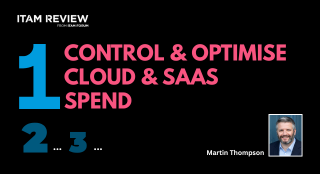Software is more expensive in Australia, but let’s get some perspective
This is a contributed comment to the ITAM Review written by Filipa Preston, CEO of Software Optimisation Services.
The ongoing parliamentary committee investigation into the alleged over-pricing of software in Australia has raised an interesting debate – are Australians being treated unfairly when it comes to the price of software?
Australians are more than aware of the premium they pay for many products and services, but given that software is not a tangible object that needs to be physically shipped, there is little justification for excessive prices.
Prices for software and digital services in Australia are, in most instances, too high. There is no justification for this. However, we need to keep a sense of perspective; many of the figures being quoted are not representative of the reality.
A 66% degree of unfairness
Adobe and Apple each received their fair share of criticism, but Microsoft appears to have borne the brunt of it, with the committee quoting a suite of Microsoft products costing 66% more in Australia than in the US. This figure is unrepresentative and unfair on Microsoft. For a start, the 66% figure relates to one specific suite of products and not the company’s entire product line. It doesn’t match my own experience either.
In my two+ decades of helping firms optimise their software spend, I have found the difference in prices to be closer to 30%. Still an unacceptable hike, but nowhere near the 66% figure.
Where Australia is cheaper
The debate also fails to point out that in some instances the reverse is in fact true – in some instances Australian software has been found to be cheaper than other countries, such as the UK. Pricing is not uniform around the world and global markets are imperfect, so it is worth bearing in mind there are discrepancies in both directions.
The criticisms also appear to focus on retail versions of vendor software (i.e. the packaged versions sold on store shelves). It is unlikely that the high figures quoted refer to volume licenced (i.e. non boxed) versions of the software. Physical, packaged software has to be shipped, so it will incur the higher shipping costs that all products imported into Australia are subjected to. This will inevitably be reflected in the retail price. From our experience, most medium-to-large organisations do not purchase packaged retail software but instead purchase through volume licence agreements – where the difference in pricing is not as significant.
It’s a global world out there
As a final point, it is worth pointing out that global organisations whose headquarters are based outside of Australia have more options still. Since most software can be purchased under global agreements to cover all operations around the world, firms headquartered elsewhere can choose to purchase their software from the headquartered country instead of Australia, if the price difference is that significant.
There is no denying that software is more expensive in Australia and I am not defending the software vendors for unwarranted price differentials, but it is important to gain a little perspective.
The nuances of software pricing in a global market is as complicated as the software licences themselves, but the price differences are not as significant as the headlines convey. Medium-to-large firms also have options to mitigate the price differences as much as they can.
Regardless of the inflated figures, software prices in Australia are still too high and I hope this campaign encourages the software vendors to take action to address the issue once and for all.
Can’t find what you’re looking for?
More from ITAM News & Analysis
-
Stop Shadow IT Before It Hurts Your Business
Shadow IT often spreads quietly and quickly becomes a serious risk. Just look at the UK-based supermarket chain Co-op. A little-known remote maintenance tool used by an external IT provider was compromised. The result? Nearly 800 ... -
Why ITAM Forum Should Join the Linux Foundation: My Rationale and Your Questions Answered
TLDR. ITAM Forum has the opportunity to join the Linux Foundation as a stand-alone, self-funded project. This article covers a) What’s happening b) Why I think it’s a great move for the ITAM Forum and c) ... -
Microsoft Pricing Changes: EA Customers Face Price Increases
From 1st November 2025, Microsoft will remove all tiered pricing for Online Services under the Enterprise Agreement. This means all customers renewing or purchasing new Online Services after this date, will receive standard level A pricing ...
Software Licensing Training
Similar Posts
-
Stop Shadow IT Before It Hurts Your Business
Shadow IT often spreads quietly and quickly becomes a serious risk. Just look at the UK-based supermarket chain Co-op. A little-known remote maintenance tool used by an external IT provider was compromised. The result? Nearly 800 ... -
Why ITAM Forum Should Join the Linux Foundation: My Rationale and Your Questions Answered
TLDR. ITAM Forum has the opportunity to join the Linux Foundation as a stand-alone, self-funded project. This article covers a) What’s happening b) Why I think it’s a great move for the ITAM Forum and c) ... -
Microsoft Pricing Changes: EA Customers Face Price Increases
From 1st November 2025, Microsoft will remove all tiered pricing for Online Services under the Enterprise Agreement. This means all customers renewing or purchasing new Online Services after this date, will receive standard level A pricing ... -
Shaping the Future of ITAM – We Want Your Input
The ITAM Forum is currently running a survey to capture hot topics and pressing challenges facing the ITAM profession. The insights gathered will guide our editorial focus and community content for the year ahead. Early responses ...





